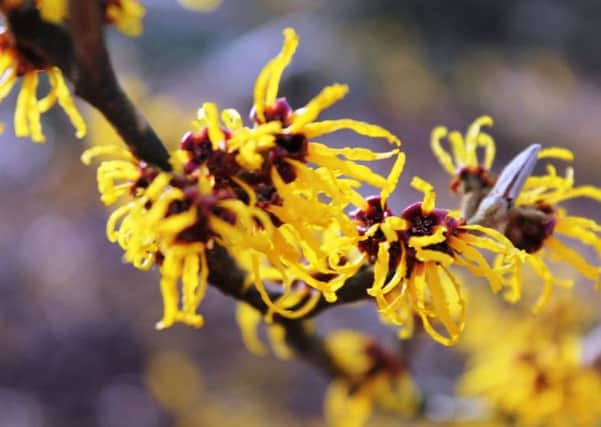Fall for autumn’s charm


They forget about October, November, December, January and February, months of murk and misery, colourless and cold. It’s sad so many gardeners turn their backs on the British winter because it can be a colourful, fragrant, visually stunning time.
There are plants which relish winter. So, give them a chance and plan for next year by taking note of what’s on offer this. Evergreens are always there, but that’s no reason to treat them with contempt.
Advertisement
Hide AdAdvertisement
Hide AdThe dark-leaved can be used to highlight the light and variegated, or they can act as a windbreak to protect tender plants.
And as for colour...the vivid yellow of winter jasmine, Jasminum nudiflorum, whose yellow blooms appear long before the plant’s leaves. Mahonia ‘Charity’ can be used to form a low holly-like hedge, but its greatest claim to fame is that it appears in October and continues to brighten dreary November.
Yellow, scented flowers arch outwards, paving the way for the equally scented Daphne mezereum, whose sweet, fragrant flowers thrive in February’s bitter frosts.
For ground cover, consider winter-flowering heathers and hellebores, bulbs like Cyclamen coum, snowdrops, winter aconites, dwarf daffodils and the white wood anemones.
Advertisement
Hide AdAdvertisement
Hide AdNo-one can claim that winter is months of unrelenting misery between the best of autumn and the arrival of spring. Plant the variegated, low-growing shrub, Euonymus fortunei ‘Emerald Gaiety’; let Skimmia japonica ‘Rubella’ flower and produce masses of bright, red berries; grow stands of dogwoods - Cornus stolonifera Flaviramea with its lustrous yellow bark, and C alba Elegantissima with its flaming red - backed by those dark and reliable evergreens.
And grow a Chinese witch hazel, Hamamelis mollis, whose scented, spider-like, yellow blooms appear in January, fading in March as leaves begin to appear.
Or plump for viburnums for their evergreen foliage and delicate flowers. The popularity of winter-flowering plants has grown to such an extent that many garden centres now have decent stocks of most varieties mentioned.